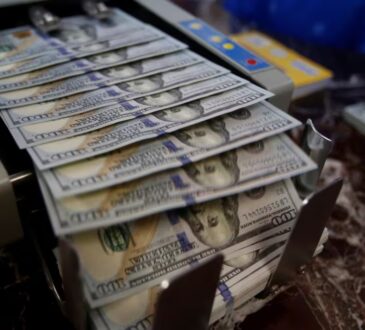Heavy is the head that wears the crown. After eighty years at the centre of the global monetary system, the United States is rebelling against its own ‘exorbitant privilege’, as former French president Valery Giscard d’Estaing famously put it.
Printing the reserve currency means that the United States can effectively run trade deficits forever. But from another point of view, it also means that it is obliged to do so, since the world demand for dollars exceeds what an economy of its size would ordinarily supply through international trade.
The supremacy of the dollar has allowed the United States not only to enjoy a much higher standard of living than if the country had been constrained by its balance of payments. It has also allowed the United States to wield extraordinary geopolitical power through its ability to cut off its enemies from the dollar system — or even allies it deems insufficiently supportive. The first Trump administration did this to European corporations to punish their governments for not abiding by its renewed sanctions on Iran following Trump’s torpedoing of the Obama-era nuclear deal with Tehran.
The last time a senior US government official made noises about the desirability of moving away from dollar centrality was when Timothy Geithner, Obama’s treasury secretary, suggested that he was open to the idea of an international reserve currency taking over the role of the dollar. Markets shuddered and Geithner backed away from the idea.
As Barry Eichengreen argues in this week’s lead article, the economic policy of the second Trump administration has raised ‘further questions about whether the United States remains a reliable economic partner for other countries and whether they can continue to rely safely on the US dollar’. In capitals around Asia, the urgent question of how to shield domestic economies from the economic damage of Trump’s ruinous tariffs is no doubt at the top of the priority list. But the longer term question of what kind of international economic order can be expected to emerge from the Trump shock is of equal concern.
Trying to predict the medium–term trajectory of US economic policy is as dubious an undertaking as Cold War Kremlinology. The Trump administration, as well as Trump himself, seems guided by a set of mutually-exclusive preferences that will be resolved at the whim of the president. Though the stock market has recovered somewhat as various Trump officials have made conciliatory noises, the real economic effects of Trump’s tariffs have yet to hit. Most observers are predicting short-term economic stagnation at best and a nasty recession as a distinct possibility. Freight volumes have collapsed and domestic prices have already begun to rise.
This is hardly the kind of economic environment in which foreigners will feel happy about lending more money to the United States to finance its budget deficit, even though the latest indications from the Republican-controlled Congress are in favour of a massive debt-financed tax cut and a spending increase that will strain bondholders’ tolerance for Washington’s fiscal incontinence. Far from dropping, as one theory of Trump’s seemingly intentional moves to provoke a recession had it, bond yields have spiked. Once the safest financial asset in the global system, the long-dated US Treasury bond is starting to look decidedly more risky.
An immediate disaster scenario in which the world economy rapidly and unceremoniously ditches the dollar in favour of some other currency or basket of currencies remains unlikely, Eichengreen argues, since ‘the dollar is deeply embedded in the global monetary and financial system’, and there aren’t enough euro-denominated assets to satisfy the world demand for AAA-rated bonds (though recent moves towards a looser fiscal stance in Germany may help). The renminbi seems even less likely than the euro to displace the dollar, given Beijing’s still fairly significant restrictions on capital flows.
But if a sudden end to the dollar’s dominance seems unlikely, Eichengreen sketches a future in which central banks continue to move towards a much more diverse portfolio of currency reserves, drawing on ‘middle power’ currencies like the Australian dollar, the South Korean won and the Singapore dollar. These are all controlled by independent central banks with credibility and embedded within political systems that value economic stability and relatively sound macroeconomic policy.
As Eichengreen argues, this is a healthy development. As Asia’s weight in the world economy has grown, it is appropriate that the global financial architecture place more weight on its most institutionally stable economies. We are not heading for a rapid and total replacement of the US dollar by some Asian competitor. But it is only reasonable to expect that as US policy becomes even more erratic and irrational, the process of currency diversification — which predates Trump and will outlast his presidency — will accelerate and become a much more important part of the world’s financial arrangements.
The EAF Editorial Board is located in the Crawford School of Public Policy, College of Law, Policy and Governance, The Australian National University.



